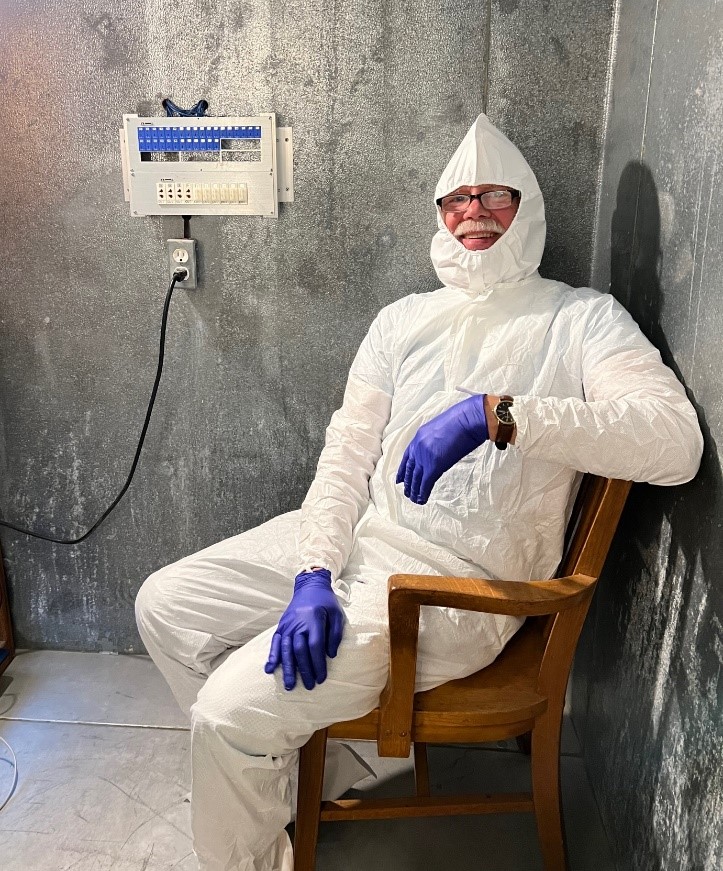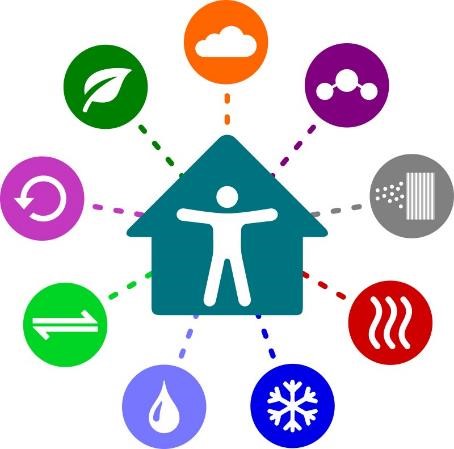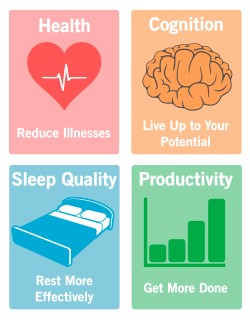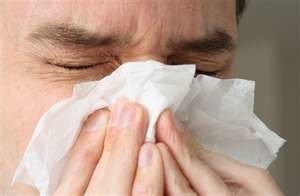
It’s good to take a break from the trenches and step back to see the forest from the trees. Build Equinox’s single-minded objective is creating indoor environments that maximize our health and productivity. Improving indoor environments to a level Build Equinox has recommended for years would save the US $165 Billion per year, or three times the combined annual cost for residential refrigerator, hot water, and ventilation energy!
Health and productivity continue to take a back seat to energy. During the pandemic, building conferences included sessions on indoor air quality and health. Now that the danger of contagion transmission is over (is it?), IAQ conference sessions are less frequent as heat pumps have taken center stage. It’s important that we don’t carbonize people as we decarbonize buildings with elevated carbon dioxide and other pollutant concentrations.

The objective of building design and construction is promotion of our health, comfort, productivity, and safety. Many designers and builders claim their buildings are healthy, but where’s the beef, the data, to back those claims? Simply stating a building is healthy, as many do, does not make a building healthy. Healthy indoor environments based on checkbox certifications and onetime measurements are hollow claims.
Effective fresh air management is preventive medicine. As stated more than 150 years ago by Florence Nightingale, if building designers and building owners were responsible for paying building occupant health bills, we would have very different buildings.

Unfortunately, health and productivity do not have meters like energy. A reduction in energy consumption shows up on the monthly utility bill. The cumulative cost of sick days, fatigue, productivity loss, poor decision-making, impaired mental focus, decreased creativity, heart attacks, strokes, dementia, cancers, allergies, auto-immune attacks, accelerated aging, shortened lifespan, and more caused by poor indoor air quality are not collectively funneled through a simple meter with a monthly bill. Instead, we wait decades for cumulative cost impacts of living and working in poor indoor environments to take their toll, indirectly billing us through an enormously expensive and inefficient health care system.
Energy, Health & Productivity Cost Perspectives
Energy is expensive, but how does energy cost stack up against health cost savings and increased productivity of improved indoor air quality? We compare operating costs of refrigerators, water heaters, and ventilation against cost savings achieved by improved air quality.
The US has a population of 330,000,000, with approximately 132,000,000 residences with an average of 2.5 household occupants per residence. As rough as these numbers may seem, we can use them for an engineering analysis….one that’s good enough for our comparison. Sharpening your pencil, adding more decimal points, using integrated analyses may refine the numbers, but the answer will remain the same; your health and productivity are much, much more valuable than energy.
US Refrigerator Energy Cost: Today’s refrigerators use 400kWh per year of electricity. Assuming 15 cents per kWh utility cost results in a household refrigerator energy expense of $60 per year for a total US refrigerator operating expense of $8 Billion per year for 132 million residences. The purpose of refrigerators is preserving our food, and that should be the focus of refrigerator research. Refrigerators store $2000/yr of food per household occupant for an average household food value of $5000 per year. Improving refrigerator food preservation that reduces food spoilage by only 1% is much more valuable than saving another 1% refrigerator energy consumption.
US Hot Water Energy Cost: Average US hot water usage is 18 gallons per day per person. Heating 18 gallons of water from 5C (41F) to 50C (122F) requires 11,700Btu (12,300kJ) of “thermal” energy. With today’s heat pump water heaters operating with a COP (Coefficient of Performance) of 3 (3 units of hot water thermal energy produced with 1 unit of electric energy), each person requires 1.14kWh per day of electric energy for hot water, or 415kWh per person per year for hot water energy. Applied across the US population, residential hot water requires 137 billion kWh of electric energy for an annual US expense of $20 Billion per year. Note that changing from electric water heaters to heat pump water heaters is an energy savings of 830kWh per person, or 2075kWh per household, which is enough for 7000 miles (3.5 miles per kWh) of EV (electric vehicle) driving per year. More judicious and efficient hot water use that drops consumption to 9 gallons per day per person provides 12,000 miles of household transportation per year!
US Ventilation Energy Cost: Build Equinox recommends 40cfm per person of fresh air ventilation, or double today’s inadequate ventilation standard (ASHRAE 62.2 and EPA Indoor Air Plus). We assume only 50% energy recovery with a temperature difference of 50F (22C) between a 32F (0C) outdoor temperature and 72F (22C) indoor temperature all year. People spend 2/3 of their time at home, which CERV2 smart ventilation units automatically sense and adjust operation during low occupancy periods.
We assume 15 cents per kWh energy cost and a heat pump COP of 3 (HSPF=10.2) for conditioning ventilation air to indoor temperature. Under these conditions, annual US expense for healthy ventilation would be $24 Billion per year. Today’s unhealthy ventilation standards (20cfm per person) reduces ventilation cost to $12 Billion per year.
Our 50F (22C) temperature difference between outside and inside of a home for 100% of the year is a very conservative assumption. Minneapolis average “winter” temperature is 37F (3C) and extends for 67% of the year. Denver’s average winter temperature is 42.3F (5.7C) and covers 75% of the year. Boston’s average winter temperature is 45.6F (7.6C) for 63% of the year, and Seattle’s is 49.6F (9.8C) for 80% of the year. Southeast locations have tough ventilation loads with humidity taking the place of large temperature differences, but overall, similar cost estimates will be found for Florida and other Gulf States (see our Handling Humidity Report #2 for details on our hourly analyses of US climatic zones).
US Total of Refrigerator + Hot Water + Ventilation Energy Costs: The annual cost for refrigerator, hot water and healthy ventilation is $8B + $20B + $24B, or $52 Billion per year, a pretty sizable amount. Substituting today’s unhealthy ventilation standard costs $40 Billion per year. But, don’t fall for the false temptation to “save” energy and cost by using today’s inadequate ventilation standard! ASHRAE now admits that current building ventilation standards are poor with release of the new ASHRAE 241 standard that supports ventilation levels Build Equinox has been recommending for years.
We have known for some time that health is related to ventilation levels. Milton’s large scale study demonstrated 40% reduction of sick days (1 sick day per year per person) when fresh air ventilation is doubled from 20cfm/person (today’s standard) to 40cfm/person (Build Equinox standard). More recent research has shown every 2cfm per person increase of fresh air ventilation in classrooms reduces absenteeism by 5.6 days per class per school year. Increasing classroom fresh air from 20cfm per person to 40cfm per person reduces classroom absentee days by 56 days, or 2.7 days per student and teacher during a 200 day school year.
A reduction of 1 sick day per year per person (40% illness reduction), assuming $500 per sick day cost for lost work, doctor visits and medical costs is a cost savings of $165 Billion per year, or three times the combined annual cost for refrigeration, hot water and healthy ventilation! Assuming a sick day costs half as much, which is unreasonably low, the $82.5 Billion per year is still much greater than the cost for US refrigerator, hot water, and ventilation energy. These cost savings are pre-Covid, pre-wildfire smoke, and neglect the value of productivity gains.
Productivity, as evaluated by Harvard’s TH Chan School of Public Health, is ten times more valuable than sick day costs with a potential value of over a trillion dollars. Additional studies continue to demonstrate the value of increased fresh air on productivity as well as reduced illness. Build Equinox field investigation of a commercial building 10 years ago demonstrated how smart ventilation could improve productivity with ten times the value of the building’s annual energy cost. The study also described how smart ventilation simultaneously reduces building energy usage while improving health and productivity. That is, you can have your cake and eat it, too.
Decarbonizing Buildings without Carbonizing People
The bottom line is that a high performance home following today’s unhealthy ventilation standards cost the US $40 Billion (refrigerator, hot water and ventilation) + $165 Billion (sick days for today’s ventilation levels) for a total cost of $205 Billion. Doubling today’s ventilation to 40cfm per person, inline with ASHRAE’s 241 standard for reducing airborne disease transmission has an annual cost of $52 Billion, for a savings of $113 Billion per year! This cost savings doesn’t show up on a utility bill but it is real. And, the extra utility cost that shows up on a utility bill…about $7.50 per month per household…..is less than two cappuccinos per month.

Let’s keep working to shift to a sustainable, de-carbonized world. But, let’s avoid carbonizing people with poor indoor air quality that makes us sick, tired and stupid. The money we save by keeping us healthy and productive can be used to decarbonize the world faster!
























